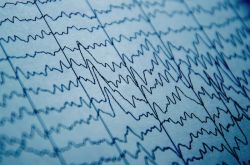Theta waves oscillate between 4 and 8 Hz and are associated with deep relaxation, meditation, imagination, and access to subconscious material. In this frequency, the brain opens to intuitive insight, creative flow, and emotional integration. This article explores the function of theta rhythms in consciousness and how they can be consciously cultivated – especially in sensitive or neurodivergent individuals.
What Are Theta Waves?
Theta activity typically arises during states between wakefulness and sleep - in daydreaming, light sleep (stage 1 & 2), deep meditation, and trance. It is most prominent in the hippocampus and temporal regions and plays a central role in emotional processing, memory encoding, and insight-based learning.
The Function of Theta
Theta waves support introspection, imagination, and access to unconscious material. In children, theta is more dominant and supports learning and emotional expression. In adults, theta tends to arise when the mind relaxes control - during hypnagogic states, moments of reverie, or deep meditation.
Elevated theta activity has been linked with enhanced creativity, emotional healing, and integration of autobiographical memories. Disruptions in theta rhythms have been observed in trauma, dissociation, and chronic anxiety.
How to Cultivate Theta
-
Meditative practices (especially with closed eyes and gentle breath)
-
Theta-frequency binaural beats (4-7 Hz)
-
Deep body-based therapies (somatic work, slow movement, craniosacral)
-
Aromatherapy with grounding and dreamy oils (e.g., sandalwood, myrrh, neroli)
-
Flickering light or visual pattern stimulation (alpha-theta entrainment)
-
Safe multisensory environments supporting parasympathetic activation
Theta in Light Brains Therapy
At Light Brains, theta is consciously supported through environments that invite safety and depth – darkened spaces, slow rhythms, warm lights, resonant sounds, and grounding aromatic profiles. For neurodivergent clients, theta is often a bridge to reconnect with the body, release emotional tension, or access non-verbal symbolic content.
Sources and Further Reading
-
Knyazev, G. G. (2007). Motivation, emotion, and their inhibitory control mirrored in brain oscillations. → Explores theta’s role in emotional and motivational regulation.
-
Ishii, R., et al. (2014). Neuroimaging theta activity during human meditation. → Shows increased theta in frontal midline regions during deep meditation.
-
Aftanas, L., & Golocheikine, S. (2001). Human anterior and frontal midline theta and lower alpha reflect emotionally positive state and internalized attention. → Demonstrates theta involvement in internal emotional focus.
-
Mitchell, D. J., McNaughton, N., Flanagan, D., & Kirk, I. J. (2008). Frontal-midline theta from the perspective of hippocampal 'theta'. → Discusses the link between frontal theta and hippocampal memory systems.
-
Ray, W. J., & Cole, H. W. (1985). EEG alpha activity reflects attentional demands, and beta activity reflects emotional and cognitive processes. → Includes discussion of alpha-theta dynamics in consciousness and attention.





